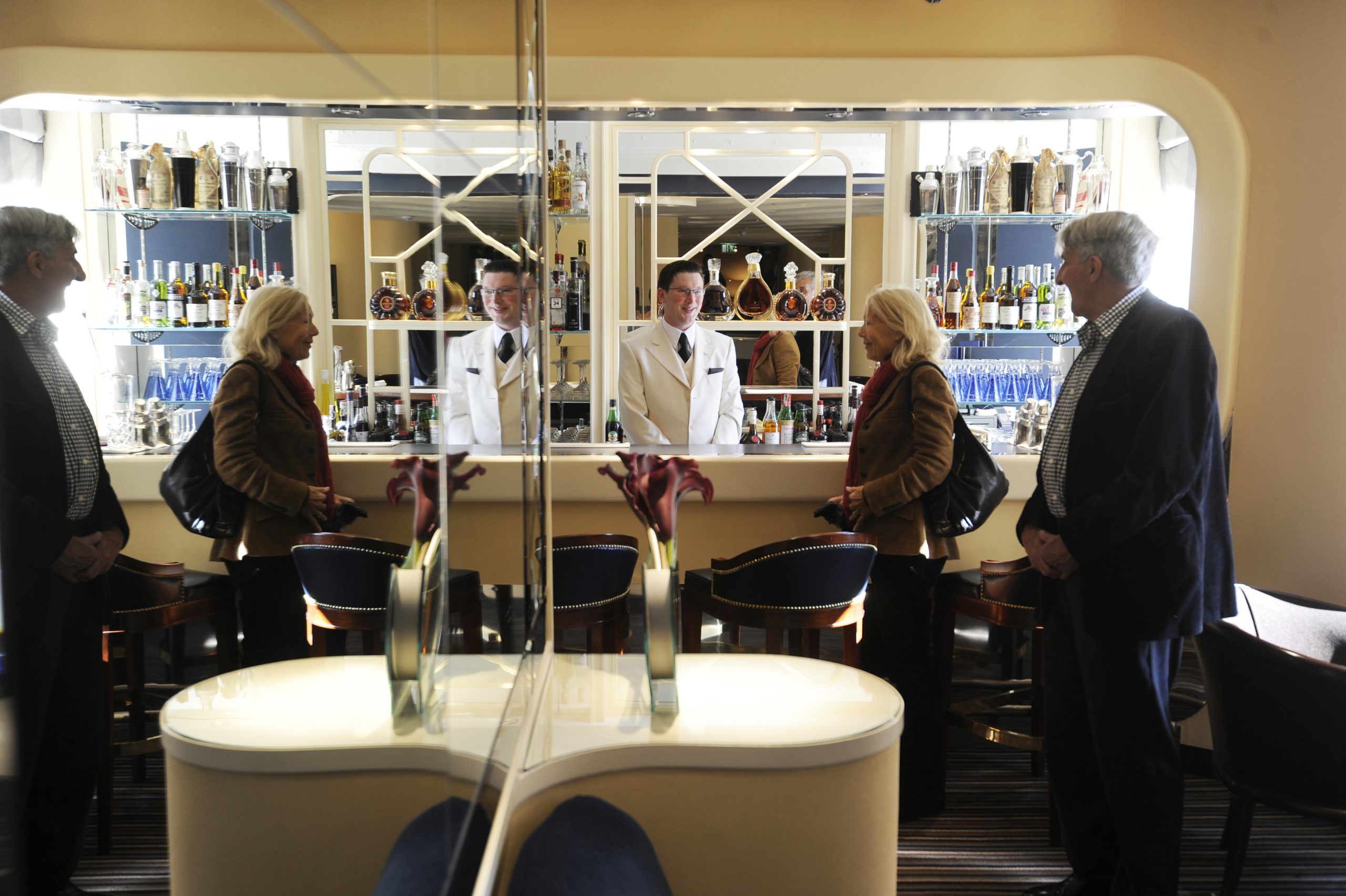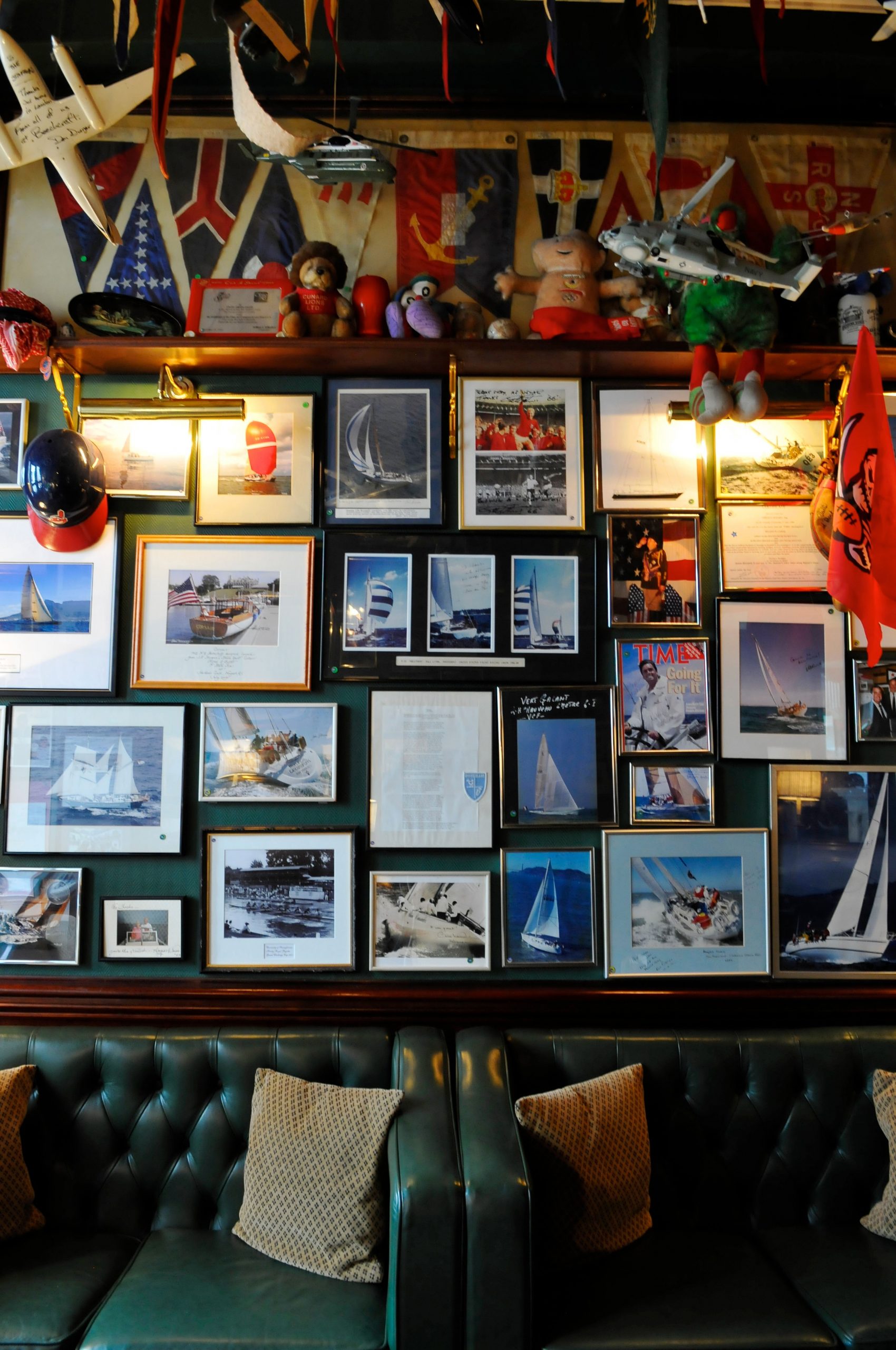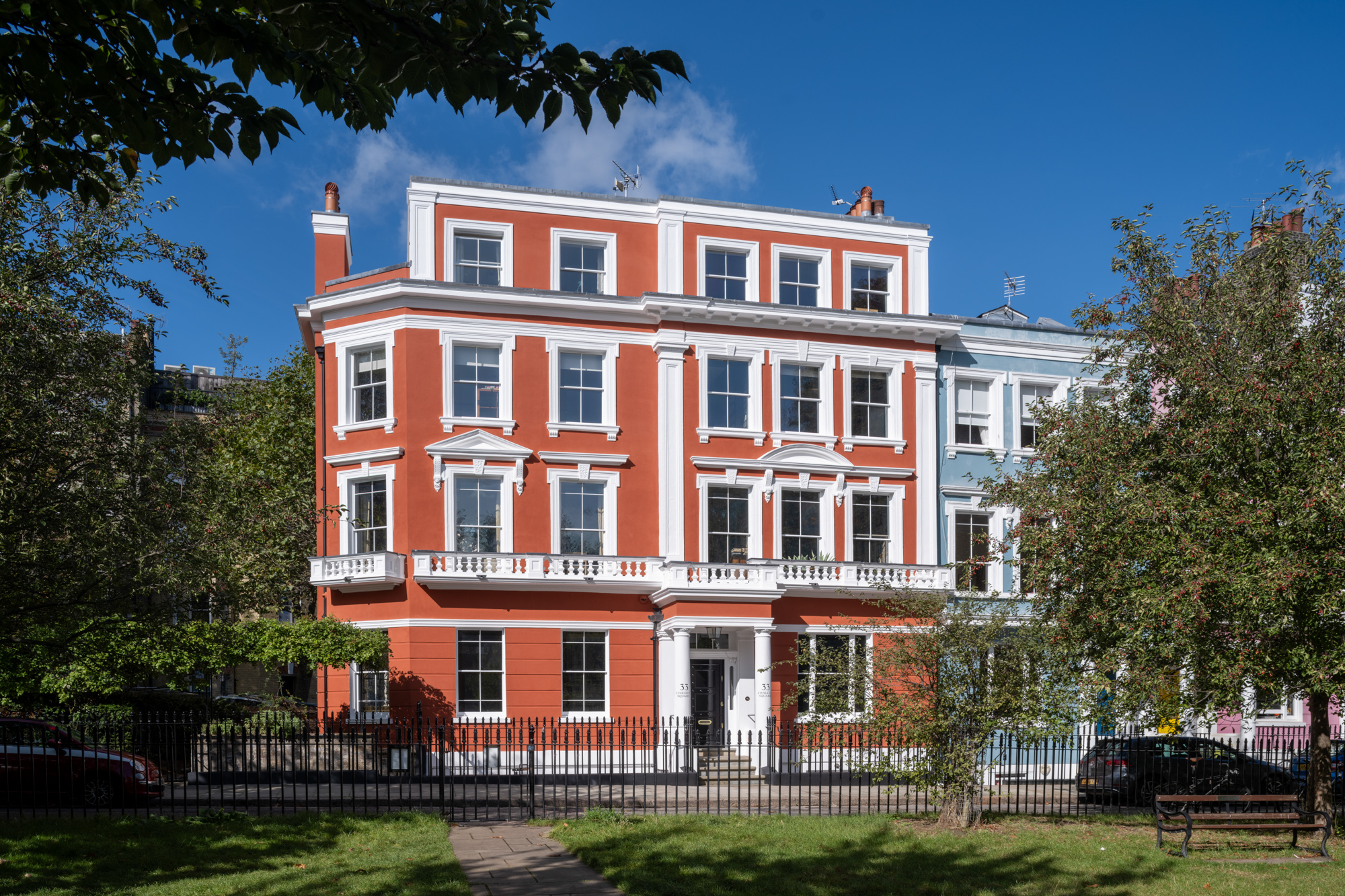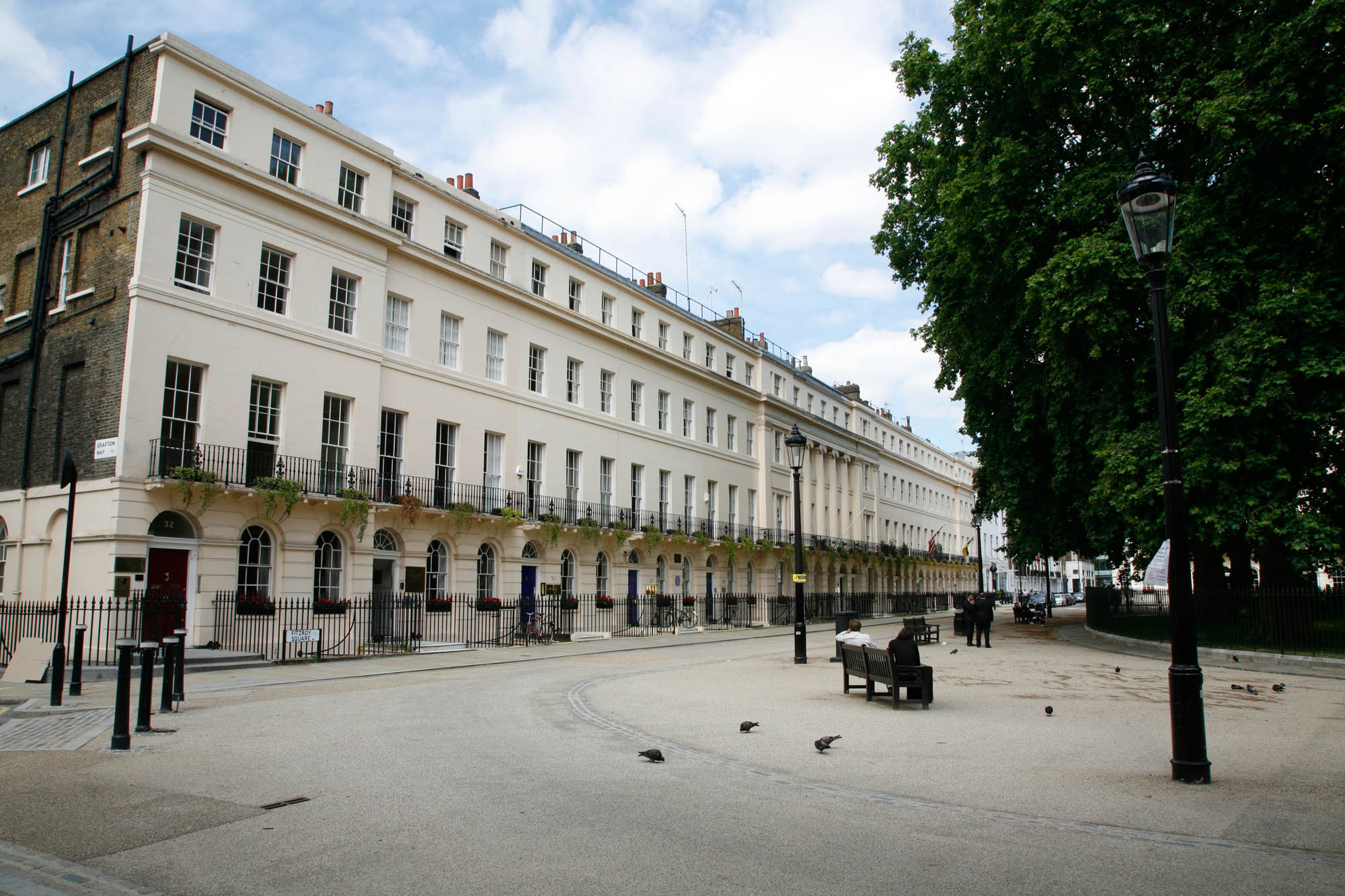The iconic American bars in London perfect for lifting a Thanksgiving cocktail
Glamorous American bars were once a familiar sight in London, catering to US and British citizens alike, but only two of the historic ones remain. On the eve of Thanksgiving, Robert Crossan goes in search of both.


Marilyn Monroe, by all accounts, didn’t much enjoy her sojourn to England in 1956. She was here to film the risible box-office turkey The Prince And The Showgirl with an irascible Laurence Olivier, who earned Monroe’s permanent opprobrium by demanding that she ‘try and be sexy’. The film, by many accounts, aged the already hardly Hebe-esque looks of Olivier by 15 years.
Norma Jean (1926–1962) did find respite from the diurnal rigours of filming in a bar whose name alone would have been a tonic for her homesickness. Not that The Savoy’s American Bar had ever approved much of tonic, or anything so otiose when it came to the making of cocktails.
The increasingly bibulous Monroe didn’t sink the bar’s ‘Montgomery’ creation — a hospital pass of a drink made with a 15:1 gin-to-vermouth ratio — but Ernest Hemingway (1899–1961) did, according to the bar’s most venerated bartender Harry Craddock. The latter published The Savoy Cocktail Book in 1930 and it is still in print now.

Today, the American Bar serves up drinks of a potency that, although more than satisfying to neophyte cocktail sippers, might well be considered tap water by former guests including the aforementioned Hemingway, author F. Scott Fitzgerald (1896–1940) and singer Frank Sinatra (1915–1998).
‘Tastes have absolutely changed since those days,’ says Chelsie Bailey, current head bartender and only the third woman to have the role. ‘I bought The Savoy Cocktail Book when I was 22 and just starting out as a career bartender but, I have to be honest, I think 80% of the recipes in there are terrible! They’re not balanced and we don’t have any of them on the menu today. American drinks, back in 1893, typically contained two or three different drinks, with very minimal dilution. Whereas, in Britain, we were drinking fortified wines and spirits with good measures of tonic waters and sodas.’
At a time when British accommodation was largely limited to grimy railway hotels and taverns, The Savoy, with its theatre, grill restaurant and sleek bar, was a genuine game changer — and one that made visiting Americans feel a little more at home in the smoggy cynosure of the capital.

‘We’ve rewritten lots of Harry’s recipes for our menu, with the thought in mind of what he would do if he were bartending today,’ says Ms Bailey — who was inducted into The Savoy after a stellar career at some of London’s most innovative bars — most recently Happiness Forgets in Hoxton (8–9, Hoxton Square, N1). There’s the Olive Twentieth Century, named after the express train that linked New York and Chicago between 1902 and 1967, and the Kings Cobbler, a liquid nod to The King’s recent coronation. Despite the land-borne location of The Strand, the bar is neither the US or UK, but rather somewhere in between for Americans to feel at home in and Brits to escape to.
Exquisite houses, the beauty of Nature, and how to get the most from your life, straight to your inbox.
A brisk 20-minute walk will take drinkers with deep pockets to the discreet Stafford Hotel in St James’s — home to the only other historic American Bar in London to survive from those boozy transatlantic days. The West End had a number of American Bars in the early decades of the 20th century, catering for transatlantic travellers. The Hotel Cecil on the Strand had a courtyard bar that became known as The Beach, described by The Gourmet’s Guide to London (published in 1914) as ‘the most American spot in London’ which, in the summer months, was filled with ‘pretty girls sunning themselves and waiters hurrying to and fro with cold drinks and long straws’.

The 800-room Cecil was demolished in 1930 to make way for Shell Mex House. It was a dismal end — although not as violent as the destruction of The Carlton Hotel’s American Bar, which was bombed by the German Luftwaffe. New Zealand’s High Commission building now stands on the same site (on the corner of Pall Mall and Haymarket). The old Regent Palace Hotel and its Art Deco-style American bar named Chez Cup — close to Piccadilly Circus — suffered a slower decline. Hotel guests once included the likes of writer Aldous Huxley (1894–1963) and poet Wilfred Owen (1893–1918), but it declined into a seedy miasma of pink carpets and plywood walls before closing for good in 2006.
Benoit Provost, The Stafford’s head bartender for more than a quarter of a century, is respectful of The Savoy’s attempts to tweak and modernise, but admits to being more of a stickler for tradition. ‘We have a lab here at the hotel where we’re always creating new drinks,’ he says, together with Salvatore Megna, director of mixology, ‘but the classics are all here, too. Drinks such as an Old Fashioned, a Manhattan or a martini have very few ingredients, so they look simple, but getting the balance correct takes real skill.’

With hundreds of Ivy League college ties and pennants hanging from the ceiling and a menu whose bar snacks remain resolutely wedded to American tastes (macaroni cheese, buttermilk chicken and glazed pork ribs), The Stafford’s American Bar could scarcely be more different to its Strand rival. The bar became the watering hole of officer-class American military personnel based in London during the Second World War — and has since played host to Stateside giants, such as President Ronald Reagan (1911–2004), actors Paul Newman (1925–2008) and Bradley Cooper (b.1975) and Bing Crosby (1903–1977), who would play impromptu rounds of golf from the reception area to the bar.
‘We make a big thing of Thanksgiving [November 23 this year] here,’ explains Mr Megna, ‘and we always have a large gathering on US election nights. It definitely got a little more tense in 2016 when Trump won, as we had supporters from both sides, but it didn’t get beyond the level of healthy debate, I’m delighted to say.’
Yet even The Stafford has traditions that extend beyond the US’s 50 states: throughout its history, the chief barmen have always been French (Mr Provost trained at the Lycée Professional catering school in St Nazaire) and a bar seat still sits reserved for the late Nancy Wake, a French resistance fighter who spent her final years living at the hotel, sipping gin and tonics at 11am, her hotel bill paid in part by The King (then Prince of Wales) in return for her actions in the Second World War.
‘It is a collaborative effort,’ says Mr Megna, as he reveals a bottle of exceptionally rare Mexican tequila he has recently sourced to be stocked in the bar. ‘It may be called the American Bar, but anyone is welcome here,’ adds Mr Provost. It would appear that, at both The Savoy and The Stafford, the American Bar concept, a place that embraces what were once commonly held virtues of the American Way — outward looking, ready to innovate and, of course, to never be too far away from another superbly poured (and potent) cocktail — is still firmly intact, if only you know where to look.

Are these the seven best independent bookshops in Britain? A writer makes her case

A country house in central London? The £10m Primrose Hill home on the square where Sylvia Plath and Ted Hughes once lived

How the Bloomsbury Group shaped life in London WC1
There’s more to the Bloomsbury Group than squares, circles and triangles, says Rosemary Hill, who explores what drew its members
Rob is a writer, broadcaster and playwright who lives in Brixton, South London. He regularly contributes to publications including the Daily Mail, Daily Telegraph and Conde Nast Traveller. Rob is the Special Correspondent for the BBC Radio Four programme Feedback and can also be heard on the From Our Own Correspondent programme on BBC Radio Four and the World Service. His first play, 'The Gaffer', premiered at the Underbelly Theatre as part of the Edinburgh Fringe in 2023.
